Bolting a DC motor to the front basket of a bike and running a chain to the front wheel takes care of the mechanical linkage needed to make an electric powered bicycle, but you also need to provide power to the motor, and control that power in some way.
Luckily, the same place that sold me the 250 watt motor also sold a 40 amp speed controler. (It cost $33, or more than any single other part of my e-bike project.)
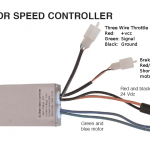
The speed controler is controlled by most standard e-bike throttles, such as this one from Currie Technologies. I also attached two 12v 5AH batteries in series to provide 24 volts. Because I calculated that my 250 watt motor running at 24 volts would draw approximately 10 amps, (250/24 = 10.4), I added a 15 amp fuse to the circuit. (The first 15A fuse was replaced by a second 15 amp fuse after it saved my speed controler from damage when I accidentally reversed the polarity on the power…)
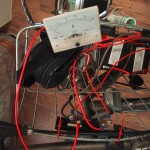 Everything was working great until the first time I turned the throttle on all the way during my first test ride. The motor ran for a few seconds, and then came to a complete stop. (This was my 2nd 15A fuse blowing…) It surprised me that the motor would draw more than 15A, so I replaced the fuse with a 40A one, and measured the current draw using a 0.5 ohm shunt and amp meter. (For testing purposes I had the batteries mounted in the front basket, however, this unbalances the bike, and for everyday use I am building a battery bracket that will mount them inside the frame.)
Everything was working great until the first time I turned the throttle on all the way during my first test ride. The motor ran for a few seconds, and then came to a complete stop. (This was my 2nd 15A fuse blowing…) It surprised me that the motor would draw more than 15A, so I replaced the fuse with a 40A one, and measured the current draw using a 0.5 ohm shunt and amp meter. (For testing purposes I had the batteries mounted in the front basket, however, this unbalances the bike, and for everyday use I am building a battery bracket that will mount them inside the frame.)
I found that my 250 watt motor (rated to 15A, or 360 watts) was actually drawing close to 21 amps, or 500 watts) at full throttle. I guess using a 40 amp motor controler on a 15A rated motor allows excess current to the motor. It would appear that the motor does not limit it’s current draw to it’s rating.
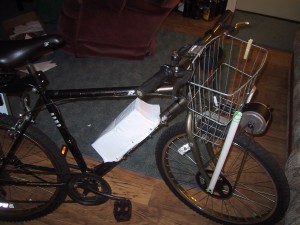
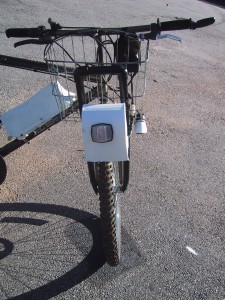
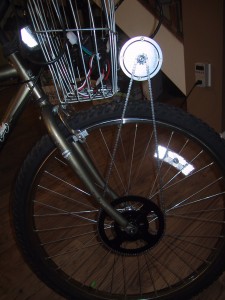

Pingback: Jay’s Technical Talk › The $175 Electric Bike